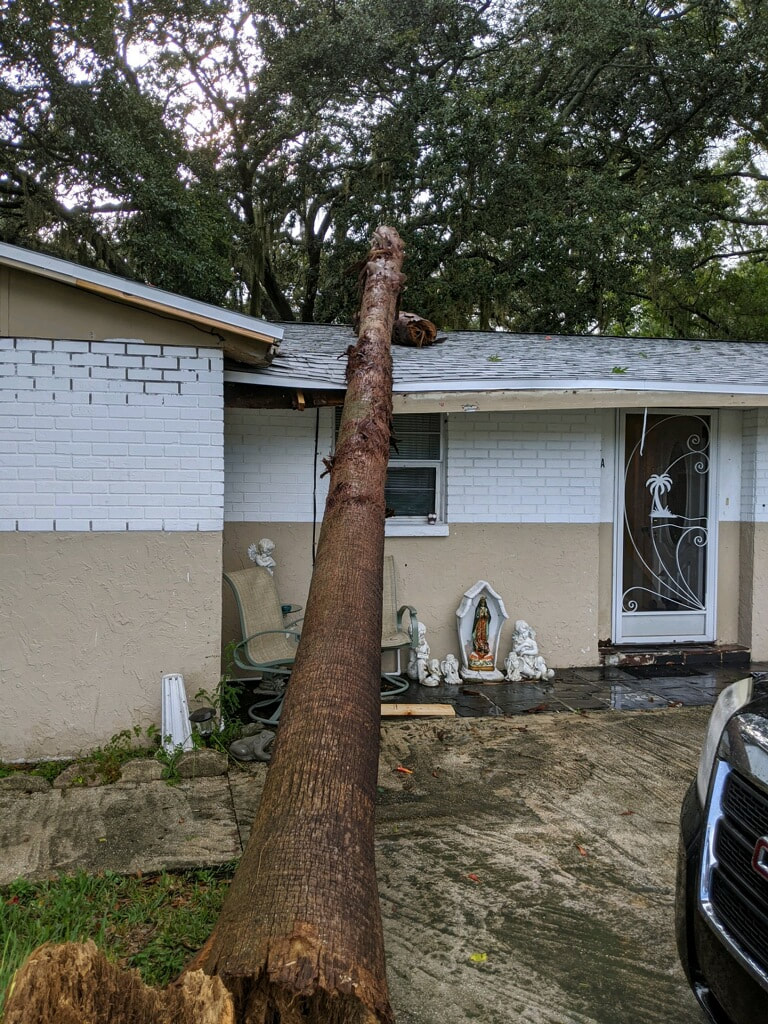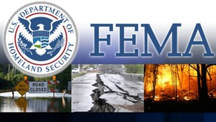|
Are you worried about one of your trees falling on your house or in your yard? Well, it's a completely valid concern, because it does happen all too often.
In most cases, you want to resolve the issue before it becomes an issue. If you can determine when a tree is about to fall, then you can easily mitigate the side-effects of it actually falling. In this article, we will cover what to do when a tree falls, and how to know when it's about to. So keep reading to learn more. How to Know If A Tree Is About to Fall?As mentioned earlier, the best way to resolve an issue is to prevent it from occurring. Fortunately, when it comes to trees, they are pretty good at giving signs about their health. So let's take a look at those. Dead Branches That Fall With EaseFirst, dead branches are not a sign that a tree will fall over entirely. However, it does present a great insight into the general health of the tree. When you start to see lots of dead branches, your tree is telling that something is not right. Branches are shed because the tree is good at self-management. It's trying to make itself smaller, which probably means that it's not getting enough nutrients, which also means that it might be getting attacked by insects or infected with a disease. Hole In the TrunkOne of the common side-effects of trees that self-prune (drop-dead branches) is the appearance of cavities/holes in the trunk. This open wound can lead to the decay of the integrity of the tree. However, this does not directly mean that it will collapse soon. If the cavity has enough solid wood around and it's isolated, then the tree is most likely not going to break in half or tip over. It's best to contact an arborist for further assessment. Missing Bark Or Deep CracksAnother sign that your tree is dying is the missing presence of or lack of bark on the trunk of the tree, which should definitely be examined by a tree professional. The presence of cankers is a definite sign of tree death. Also, if you see deep cracks on the trunk, you should be concerned. These will make the trunk weak, thus making the tree a potential hazard. When you spot these issues, take care of them sooner than later. Tight V-Shaped GrowthTrees are miracles. If a tree's branch growth is not at an ideal distance, there is something wrong with it. Branches that grow too close to each other will be in a V-shape, which is deviated from the perfect U-shape that it can have. The best time to recognize this branch growth is during the winter or late fall after the leaves have fallen, and the tree has already went deep into hibernation. Rotten and Weak RootsThis issue is harder to spot but it's persistent nonetheless. Because the tree roots are covered in the soil it might be difficult to uncover at first, but there is one reliable method for finding tree rot. Look for fungi and mushroom growth around the base of the tree, which is a good sign that the wood is rotting. What Do I Do If a Tree Falls?First and foremost, ensure everybody's safety. Once that is settled, assess the circumstances for the presence of other hazards, such as downed power lines. If this is true, stay as far as possible and call the utilities/power company. Treat any cable or line as it is life, and stay away until proper specialists have arrived and addressed the issue. If the tree falls on your house, there are several factors that will help determine how bad the situations really, and the degree to which damage has occurred. Many of these will seem urgent or obvious, but here is a shortlist of considerations that will ensure the safety of your family. First, evacuate ASAP. If you're on the third or second story, it's best to get on the main floor as soon as possible. Make sure everyone is safe and accounted for. Second, call emergency help. If you find yourself in a situation in which a tree is blocking an exit, call for help. This is an emergency, and emergency help is needed. Third, protect the inside structure. Tree roof damage will expose your home to the elements. Be careful when covering anything that could be damaged by moisture, and make surer to lock the doors and secure valuables. Hire an Arborist/Tree SpecialistIf you've already called for emergency help from an arborist, good for you. If you haven't, now is the time. Make sure they are certified and let them assess the circumstances. Arborists are efficiently-trained when it comes to complex tree and equipment situations. They know what to do when it comes to tree removal, and have the necessary experience in getting the job done right. It's important that good work by qualified people will cost more than the same work being done by some unexperienced fella. Professional prices come with worker's compensation insurance, liability, and bonded security. Not to mention, the use of specialty equipment, such as hardware, loaders, and cranes. If you think the estimate is too high, ask what it consists of. You might be getting a lot more than just tree removal. Let's Prevent the IssueNow that you know what to do if a tree falls, and how to determine if it's about to, you are well on your way in securing your household from tree hazards. However, knowing is one part of the equation, as you also need to act upon that knowledge. If you need help in assessing your yard for potential hazards and consequently removing them, get in touch with us and we will happily accommodate your needs.
20 Comments
7/20/2021 04:22:53 am
Thanks a lot for this information. This can be common problem for anyone one of us. We need to consult good professionals for tree removal or any other tree service.
Reply
12/17/2021 12:41:14 am
Appreciation for really being thoughtful and also for deciding on certain marvelous guides most people really want to be aware of.
Reply
2/28/2022 10:49:12 am
There's a tree on my property that looks like it might fall, and I'm not sure what to do about it. It makes sense that I might want to get a professional to help me out with removing it! I can see how it would be better to remove it than to let it fall on it's own.
Reply
3/26/2022 12:03:06 am
I appreciate that you explained the importance of consulting a professional because they have the knowledge and material for the service. My wife and I observed that our tree had broken limbs, and she asked if I had any suggestions for what we should do. Thanks to your helpful article, I'll make an appointment with a reputable arborist, who can assist with correct trimming and other preventative measures.
Reply
4/12/2022 07:48:08 am
I didn't know that fungi and mushroom growth are indications that wood is rotting. I think I need to call a tree removal service to remove the trees on our property that are rooting. I'll make sure to observe if any of our trees are rooting
Reply
4/14/2022 04:44:15 pm
It was really helpful when you said that lack of bark is a bad sign. My husband and I noticed how the tree in our backyard has a lack of bark on the stump, and we weren't sure if that was a sign that something is wrong. We'll have to look into hiring a tree removal service that can remove it for us before it falls and causes damage.
Reply
4/29/2022 05:04:15 am
We have noticed that a lot of branches are falling off of a large tree we have in our yard. These branches are usually dead. Thank you for pointing out that if you get dead branches that fall it shows that the health of the tree is not right. We will call for a tree removal service this week.
Reply
5/3/2022 04:43:57 pm
The best way to resolve an issue is to prevent it from occurring. Fortunately, when it comes to trees, they are pretty good at giving signs about their health. Thank you for sharing your great post!
Reply
6/8/2022 10:39:52 am
Thank you for explaining that missing bark is a sign that your tree is dying. I was looking at one of the trees on our property and noticed some missing bark on parts of the tree. I'll talk to an arborist and see what we can do to either help the tree or get it removed.
Reply
It really helped when you said that there is something not right with the tree if there are a lot of dead branches. With that in mind, I will be looking for tree removal services to check on the one in our front yard. It is also leaning on its side, so it's best to get it removed before it causes an accident.
Reply
7/6/2022 11:10:33 am
Thanks for explaining that the presence of cankers is a major sign of tree death. My husband is worried that our Japanese maple tree is dying. We'll have to reach out to a tree company in our area so they can come look at it.
Reply
7/12/2022 08:03:46 pm
Trees enhance the quality of our lives by delivering natural elements and habitat for wildlife in urban settings.
Reply
7/26/2022 04:51:42 am
Thank you for this informative article about tree care. I hope there are a lot of arborist who could read this and be guided accordingly.
Reply
7/26/2022 07:38:05 am
It got me when you said that we should evacuate as soon as possible when a tree falls, so we are sure that everyone is safe. I will keep that in mind if ever that happens with the one in then backyard. It's because it is almost leaning towards the house, but it should be better to have a tree removal service get rid of it before it collapses to protect the property as well.
Reply
8/10/2022 05:44:45 pm
If the cavity has enough solid wood around and it's isolated, then the tree is most likely not going to break in half or tip over. I truly appreciate your great post!
Reply
8/11/2022 04:07:50 pm
I'm glad you explained how dead branches are a wake-up call that's telling you about your tree's health and how it'd be in danger. My sister has a huge tree near her garage, and the other day I noticed how it had a few broken branches. I'll call my sister now and suggest she find a tree expert before it's too late. Thank you for the advice on identifying an ill tree before it falls into your home and damages it.
Reply
5/26/2023 01:26:55 am
A perfect info source. Thanks for taking the time to discuss this, I feel strongly about it and love learning more on this topic.
Reply
8/30/2023 05:56:07 pm
Fantastic article! The proactive approach of spotting early signs and taking preventive measures is truly invaluable. As the saying goes, "An ounce of prevention is worth a pound of cure." Your detailed breakdown not only educates homeowners but also emphasizes the importance of professional assessment. Kudos to you for this enlightening piece – a must-read for every homeowner! 👏🌳🏠
Reply
6/24/2024 04:12:33 am
Great information, appreciate it! The steps to take if a tree falls, especially prioritizing safety and calling for professional help, are crucial for effectively handling such emergencies.
Reply
Leave a Reply. |
AuthorWe tackle all the jobs the same, no job is to small or to big. Call us today at |
|
FEMA APPROVED
|
|
|
Riverview Tree Service
|

 RSS Feed
RSS Feed
